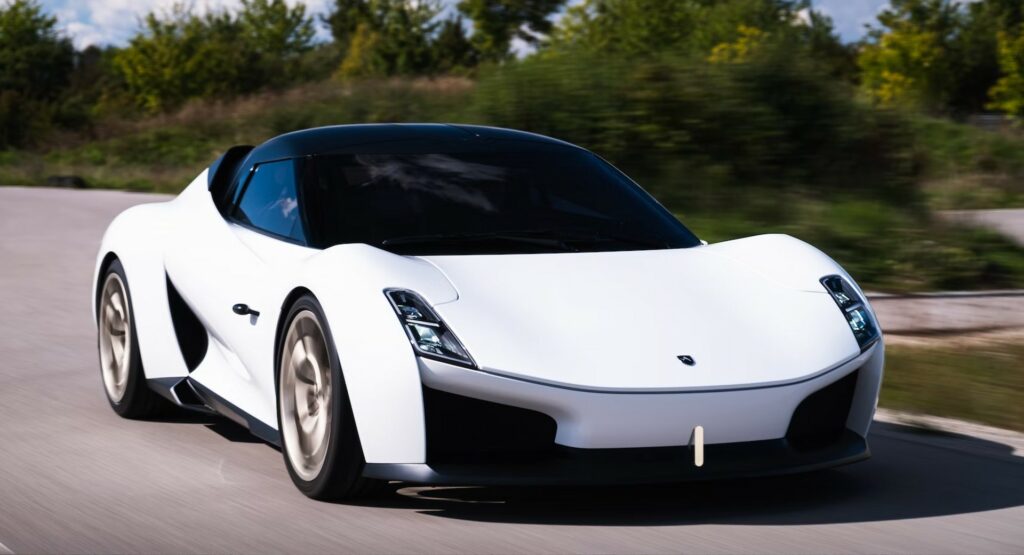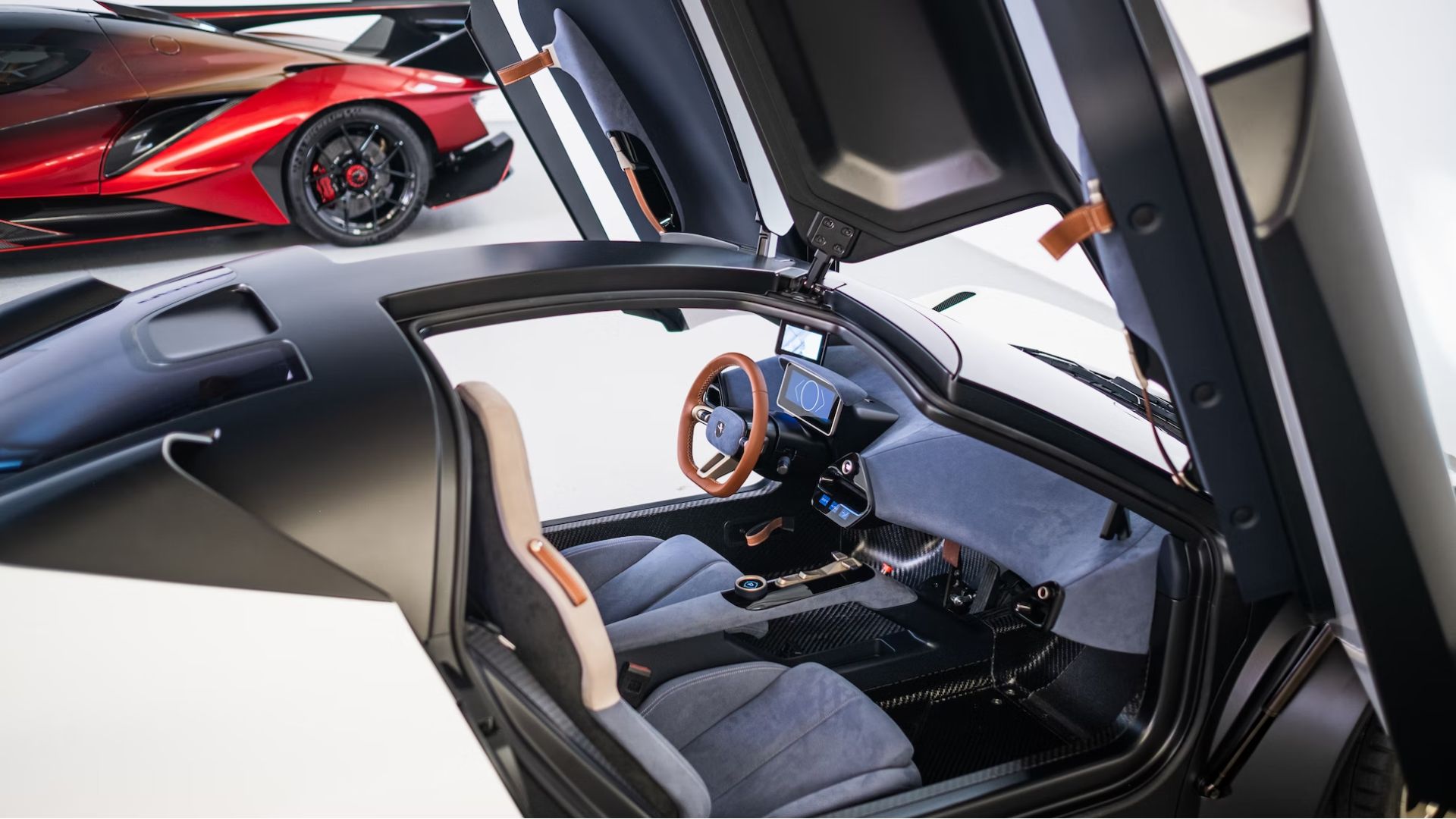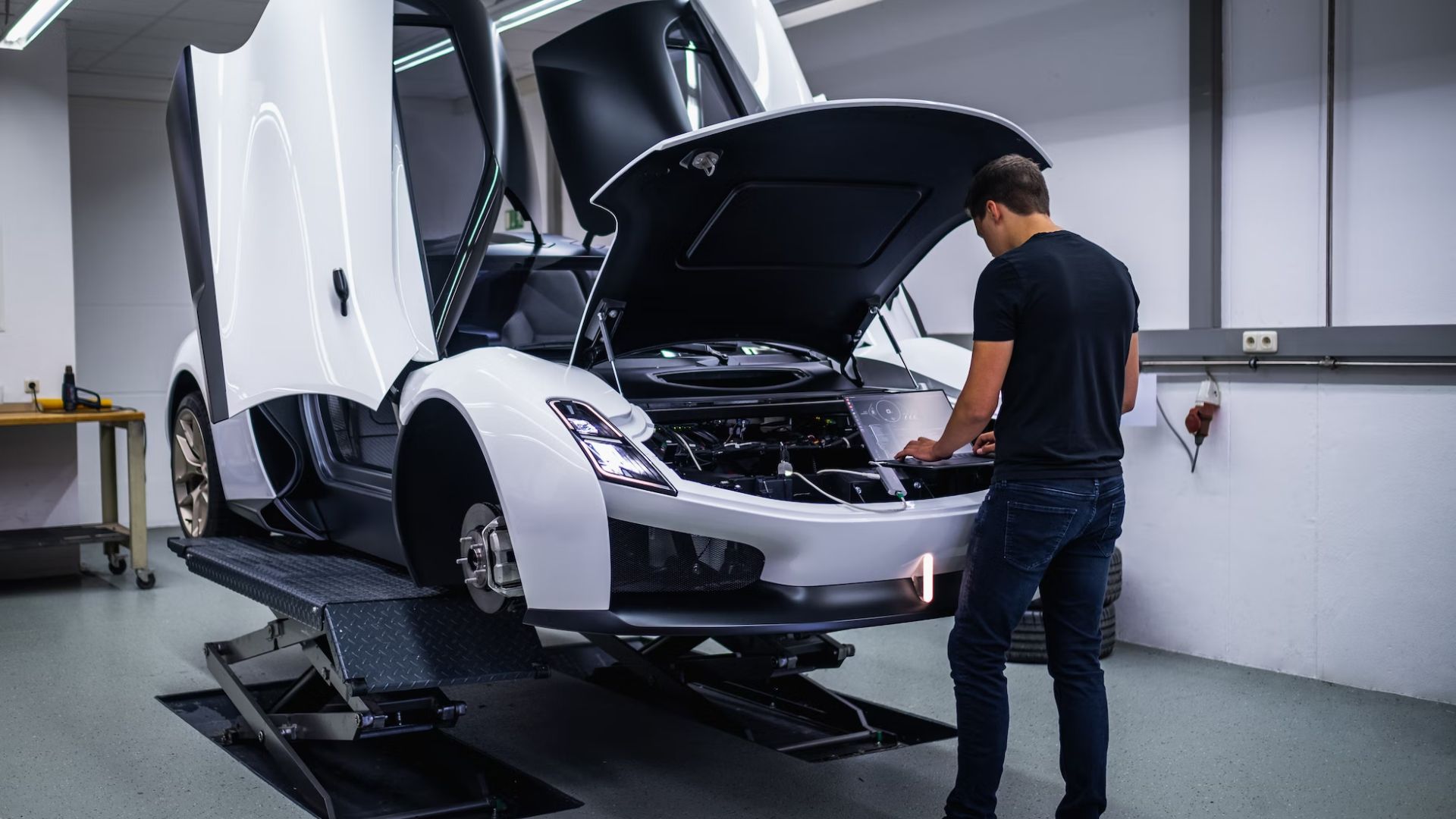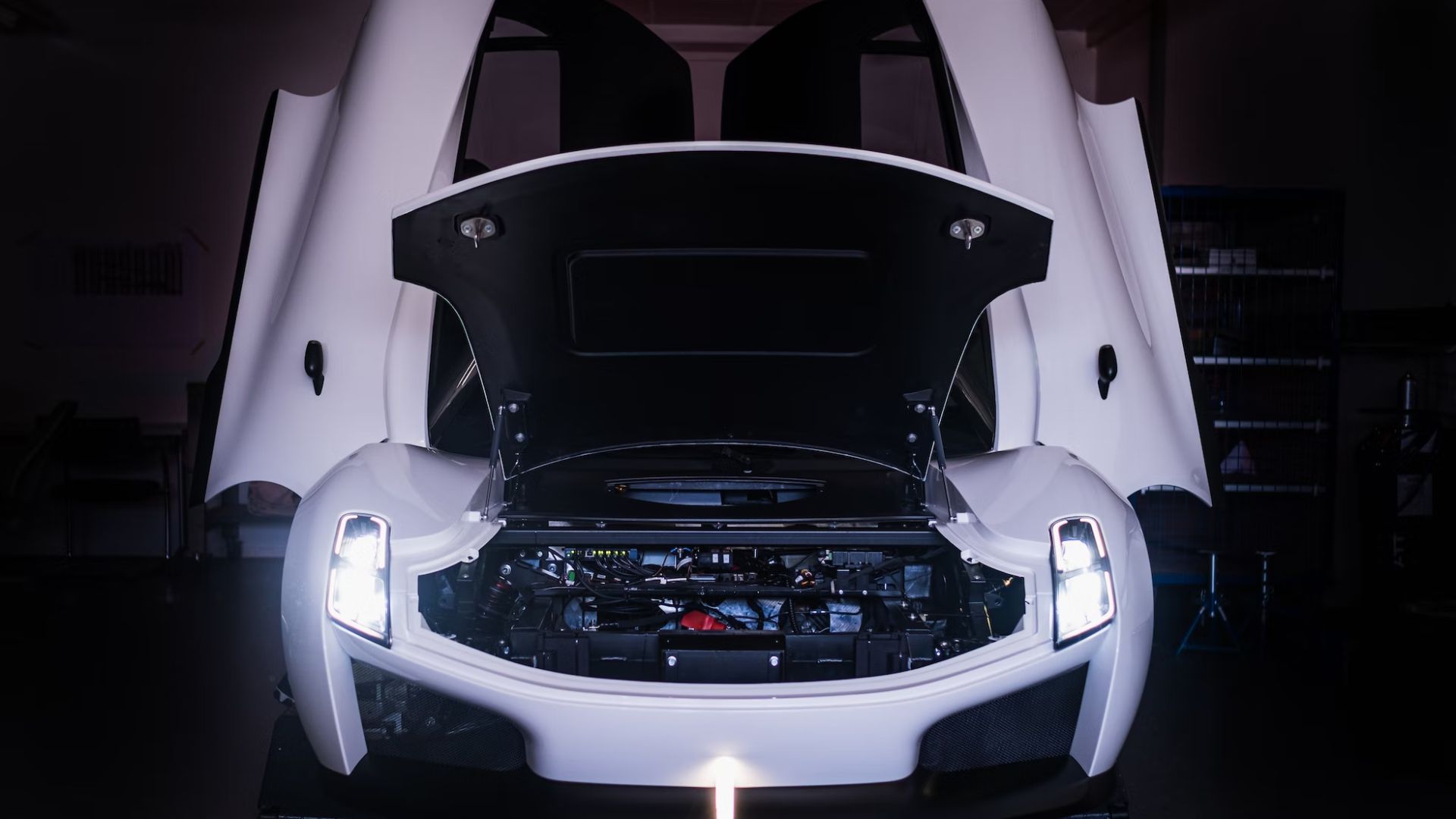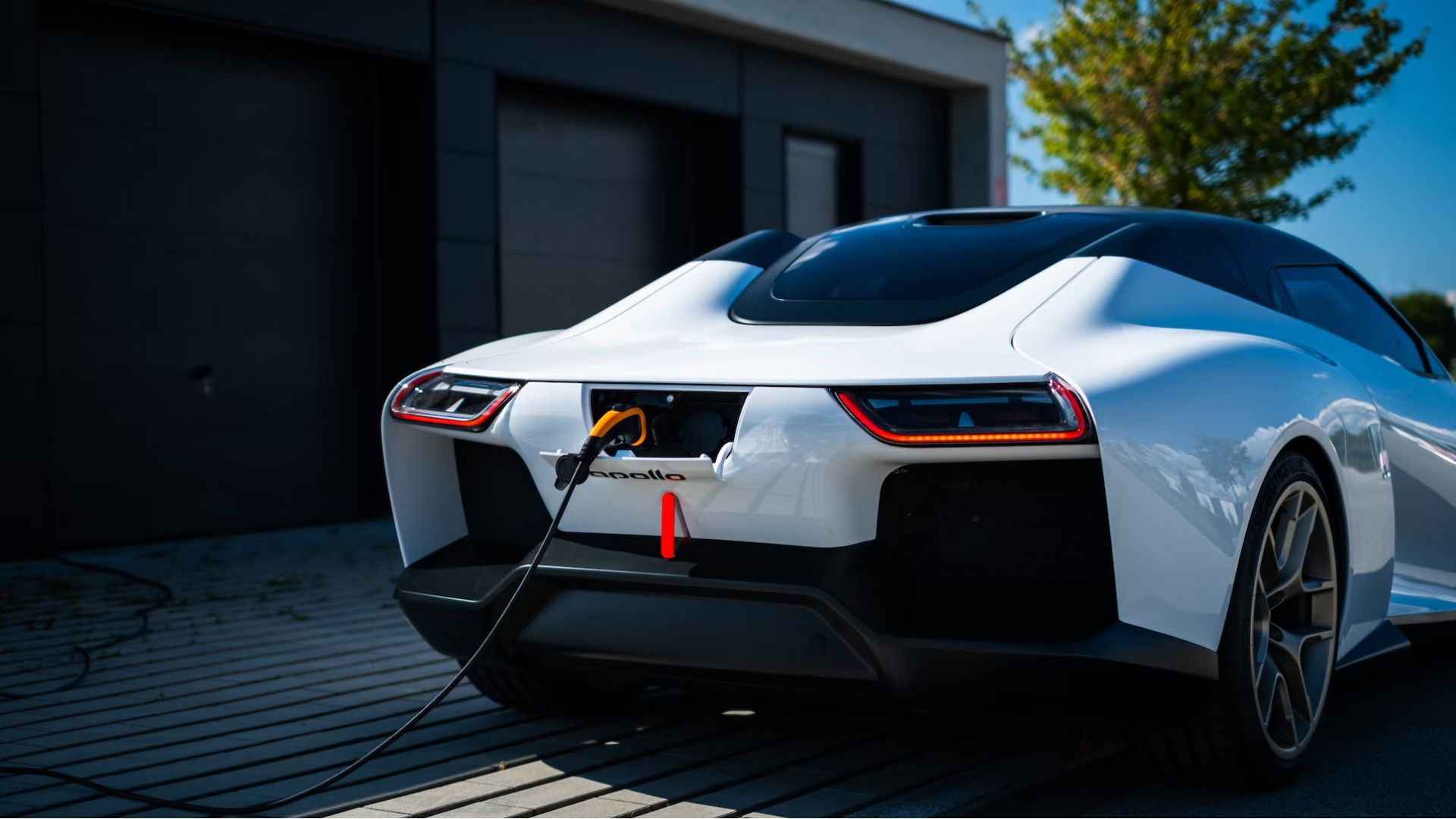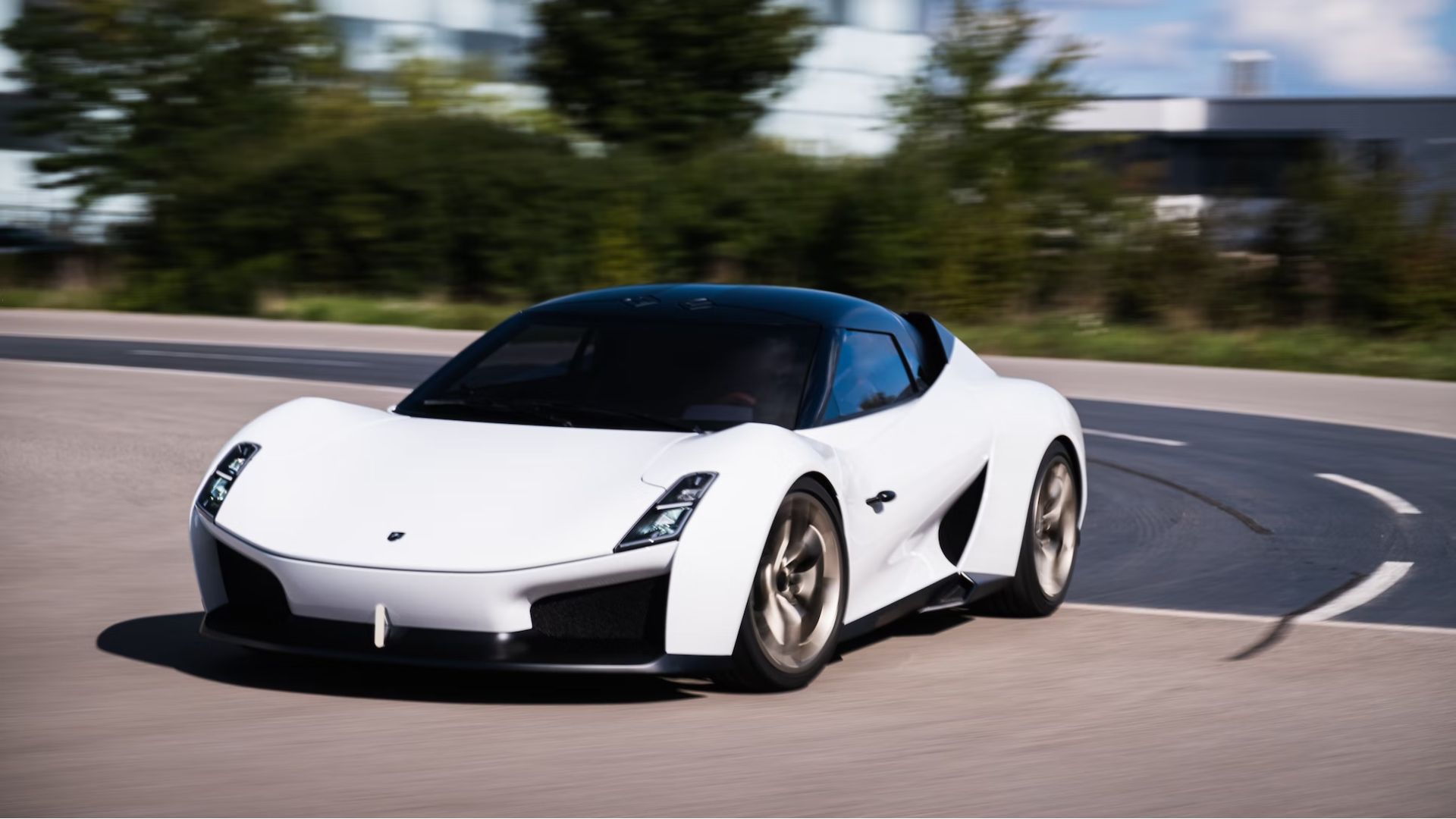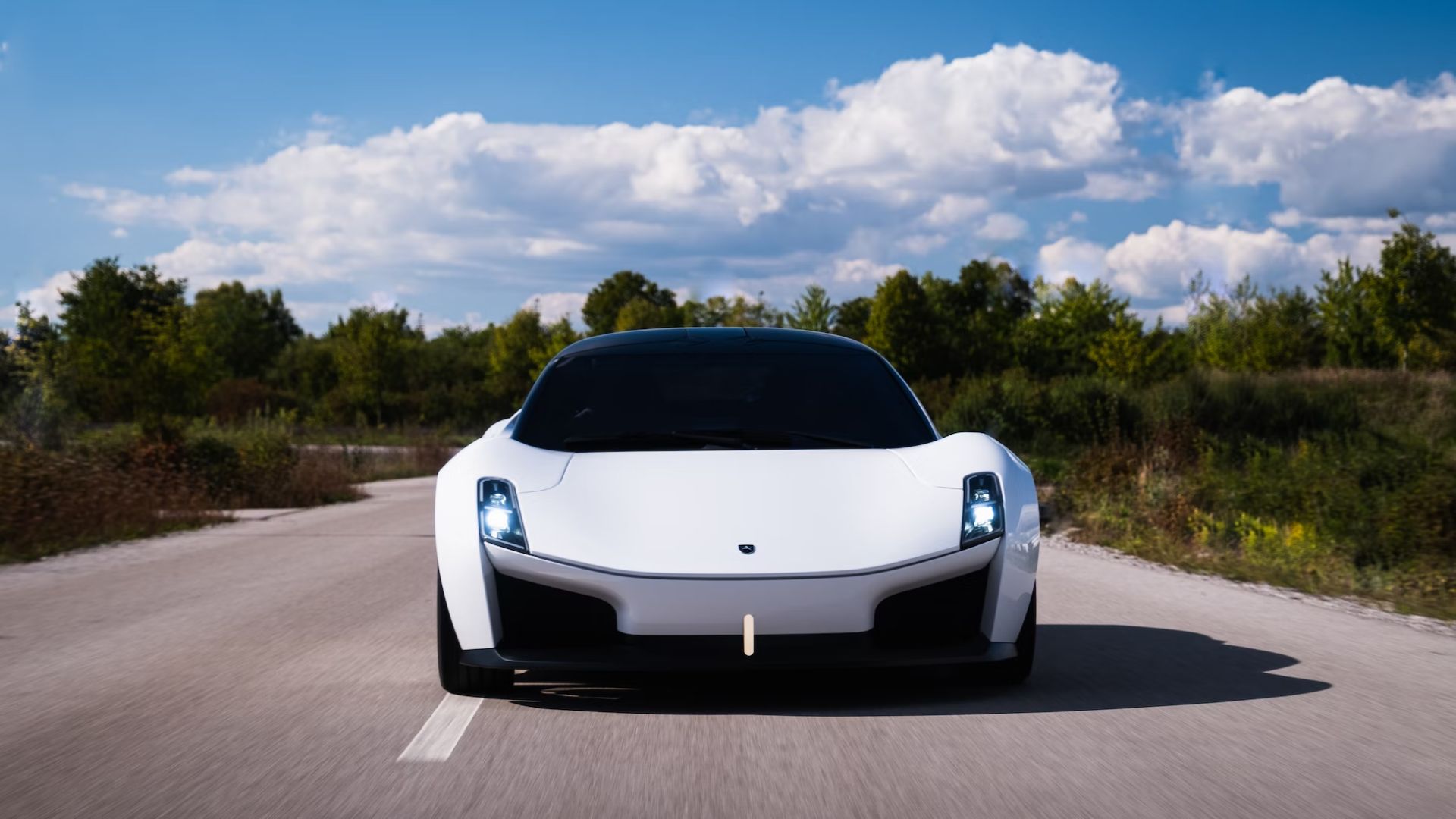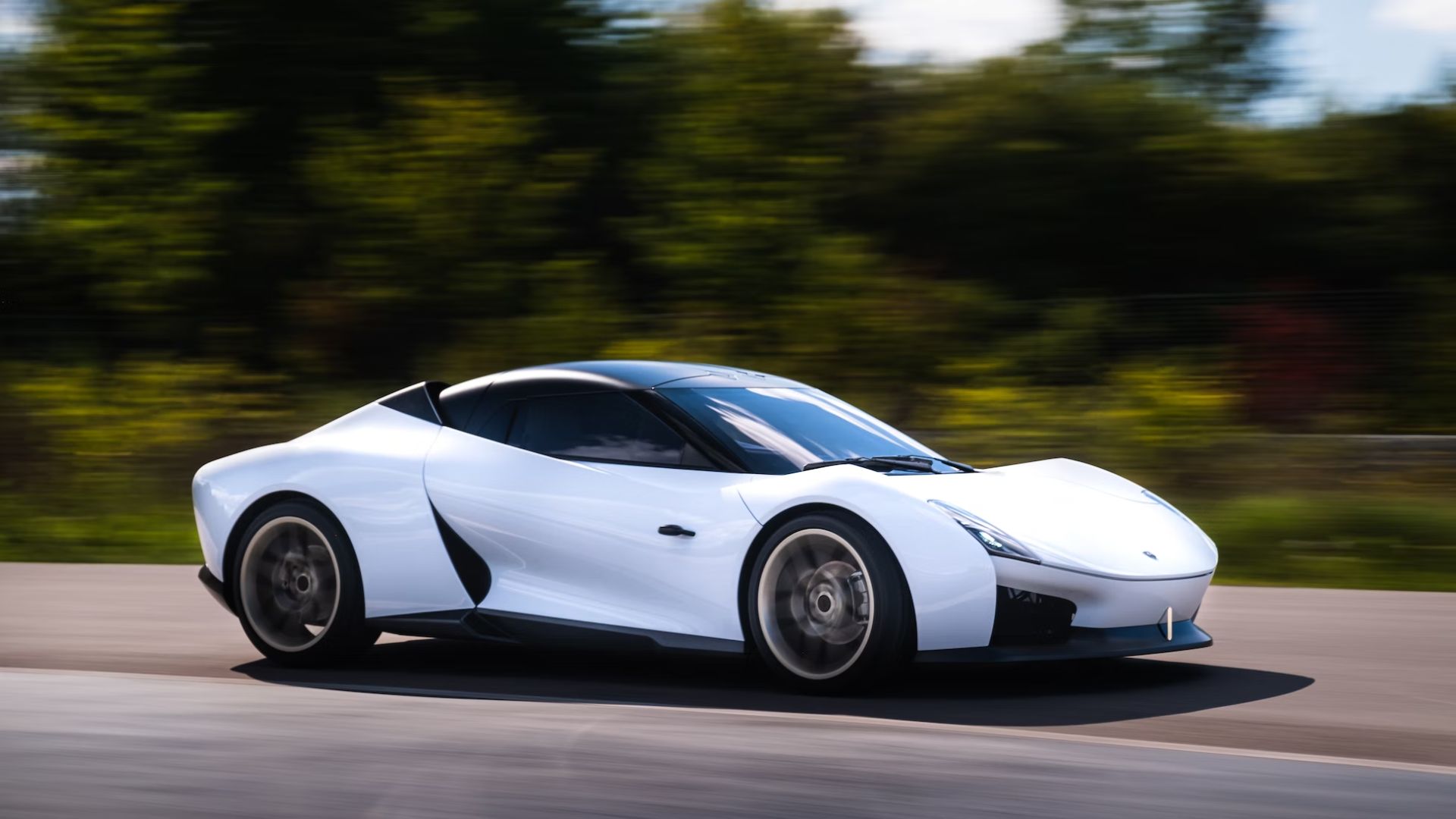Apollo Future Mobility Group presented a vehicle that is quite different from its limited production hypercars. The Apolo G2J, described as an advanced rolling engineering prototype, is a fully electric sportscar, serving as a preview for the design and technology of future Apollo products.
Apollo has been working on the prototype for more than two years, moving towards its goal of becoming an EV-only brand. The model that is codenamed G2J is currently going through a testing phase for refinement and validation in key areas like the electric powertrain, connectivity, and “digital ecosystem technologies”.
See Also: Watching An Apollo IE Lap The Nurburgring Is Quite Extraordinary
The design of the G2J is a preview of Apollo’s future design language. Interestingly, the prototype doesn’t look nearly as radical as the brand’s ICE-powered hypercars like the V12-powered Intensa Emozione and Project Evo, opting for a more restrained approach. It has the proportions of a mid-engined sportscar, benefiting from the packaging of the EV platform.
The exterior is characterized by sculpted surfaces, pronounced fenders, a low nose, modern-styled LED lighting units, dual intakes on both ends, butterfly doors, camera-replacing mirrors, and a rear-mounted charging port. Inside the two-seater cabin, we find plenty of exposed carbon fiber, Alcantara upholstery, leather accents, a digital instrument cluster, and a floating center console. Overall, the G2J looks like it is close to production status in terms of design, technology, and materials, despite being an engineering prototype.
According to Apollo, the G2J is made using “the most advanced lightweight composite materials” with chassis made of carbon fiber. This platform will underpin a range of performance-focused EVs. Mind you, in November 2021, Apollo presented the EVision S (sedan) and the EVision X (SUV) concepts, alongside an electric crate powertrain. While the company didn’t go into details about the underpinnings of the G2J, it could be using an evolution of this 800V system that featured dual axial flux electric motors and planetary gearboxes.
Apollo Future Mobility Group has a network of “wholly-owned specialist centers” in different locations in the UK, USA, Germany, and Japan. Development work for the prototype is led by the European R&D center located in Ingolstadt, Germany.




